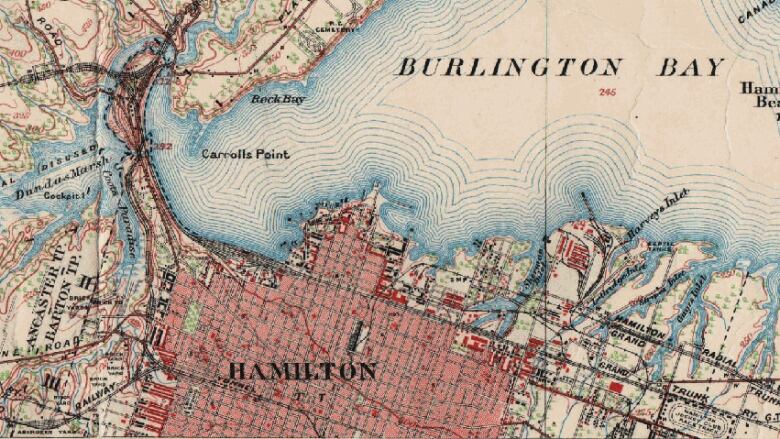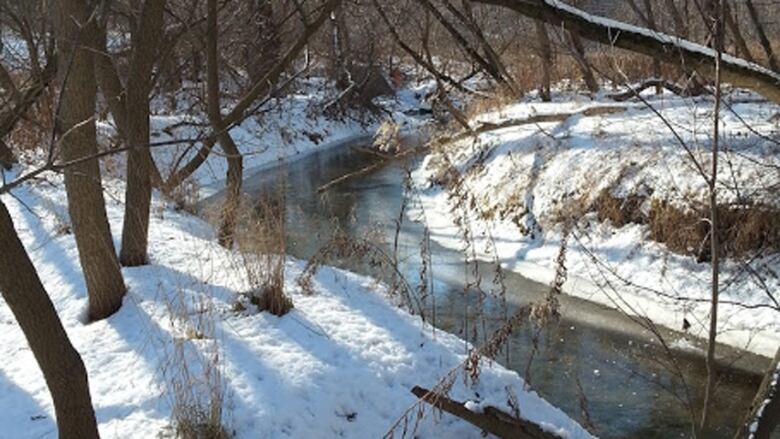How Hamilton's ghost rivers haunt city's new development
'Water always wins in the end': Lost rivers slow development and capture the imagination

LouieSantaguida'scompany is building a30-storeycondo tower in downtown Hamilton. And for a few months, he thought he had plans for its substructure nailed.
Water always wins in the end. Unless you reroute it in a sustainable way, it will come back to haunt you.- Dan McKinnon, general manager, public works
He'd already sold 70 per cent of the units, which includetwo-bedroom penthouses for$684,000. Then came an unexpected delay an old streamunder the future home of The Connolly.
"We're sitting on a former river basin from 10,000years ago,"Santaguidasaid in the fall. "We're overcominggeotechnicalchallenges. We've been doingthat for the last three months."
Santaguida'sdilemma isn't a unique one. Peel back Hamilton's surface and you'd find decades of streams, rivers and watercourses that once existed. They're now known as "ghost rivers."

Centuries ago, Hamilton was a blanket of lush green space. Then along came humanswho wanted more space to build.
Sometimes they rerouted water into culverts and built roads and parking lots on top. Sometimes they filled in the watercourses with dirt, with garbage, with other material.
There aremany streams that would have come down the escarpment and cut through the town.- Mike Waddington
Generations later, developers still shoulderthe impact. Like Santaguida, they dig in and find the soil soft and unstable.
"Water always wins in the end," said DanMcKinnon, the city's general manager of public works. "Unless you reroute it in a sustainable way, it will come back to haunt you."
The North End is an example of modern day building on what used to be water. Look at a map from 100 years ago, McKinnon said, and that space is part of the harbour. Much of Hamilton's industrial area is in fill too.
Hamilton isn't alone in this, said Mike Waddington, a McMaster University professor of geography and earth sciences. San Francisco is a famous example of this dynamic.

The Niagara Escarpment and its many waterfalls make Hamilton's streams persistent, Waddington said.
"There aremany streams that would have come down the escarpment and cut through the town," he said. "Along the shoreline, we had huge wetlands with their own little inlets and small streams."
We now know that small streams and wetlands provide valuable ecosystems and services.- Mike Waddington
Previous generations lacked environmental knowledge, Waddington said. They saw"wetlands along the coastline as wasteland."
Newer cities, such asOakville, incorporate greenery into the urban landscape,Waddingtonsaid. But "in Hamilton, they were mostly filled in."
"We now know that small streams and wetlands provide valuable ecosystems and services."
There'sat least one local movement to peel back the concrete and let water flow freely again. A McMaster University group called Parking to Paradise is reviving wetland at parking lot M.
The area was once the Coldspring Valley Nature Sanctuary, said graduate student Reyna Matties. Royal Botanical Gardens owned it until 1963. McMaster bought it two years later and paved it.
The sanctuary bordered Ancaster Creek, Matties said. Rainwater still moves across the parking lot. But now it picks up contaminants such as salt and garbageand carries it into the creek.
Environment Canada says creeks need a 30-metre buffer. Parking to Paradise is restoring the channelized Ancaster Creek, and to create a buffer, restored parts of the parking lot to green space.
The group hopes to erectsigns and hold walking tours in 2017, said Matties, whose graduate research focuses on the buffer. It will also put two large bioswales at the south end of Lot M.
Otherwise, many ofthe watercourses are lost to the human eye. They flow through subterranean Hamilton, popping up only when someone digs too deeply.
Butghost rivers capture the imagination. In The Paris Review, writer Will Huntdocumented following a famous one the once wild Minetta Creek through lower Manhattan. He traced its route, hoping fora glimpse of it as it ranunder a nursing home and Barnes and Nobles.
At the bookstore, he went intothe basement. He found no trace of it.
"Perhaps it was only my imagination," he wrote, "that the air in the basement felt inordinately damp."












_(720p).jpg)


 OFFICIAL HD MUSIC VIDEO.jpg)
.jpg)



























































































